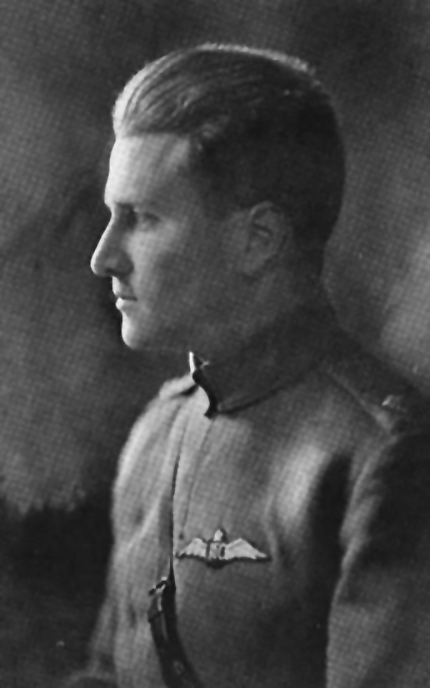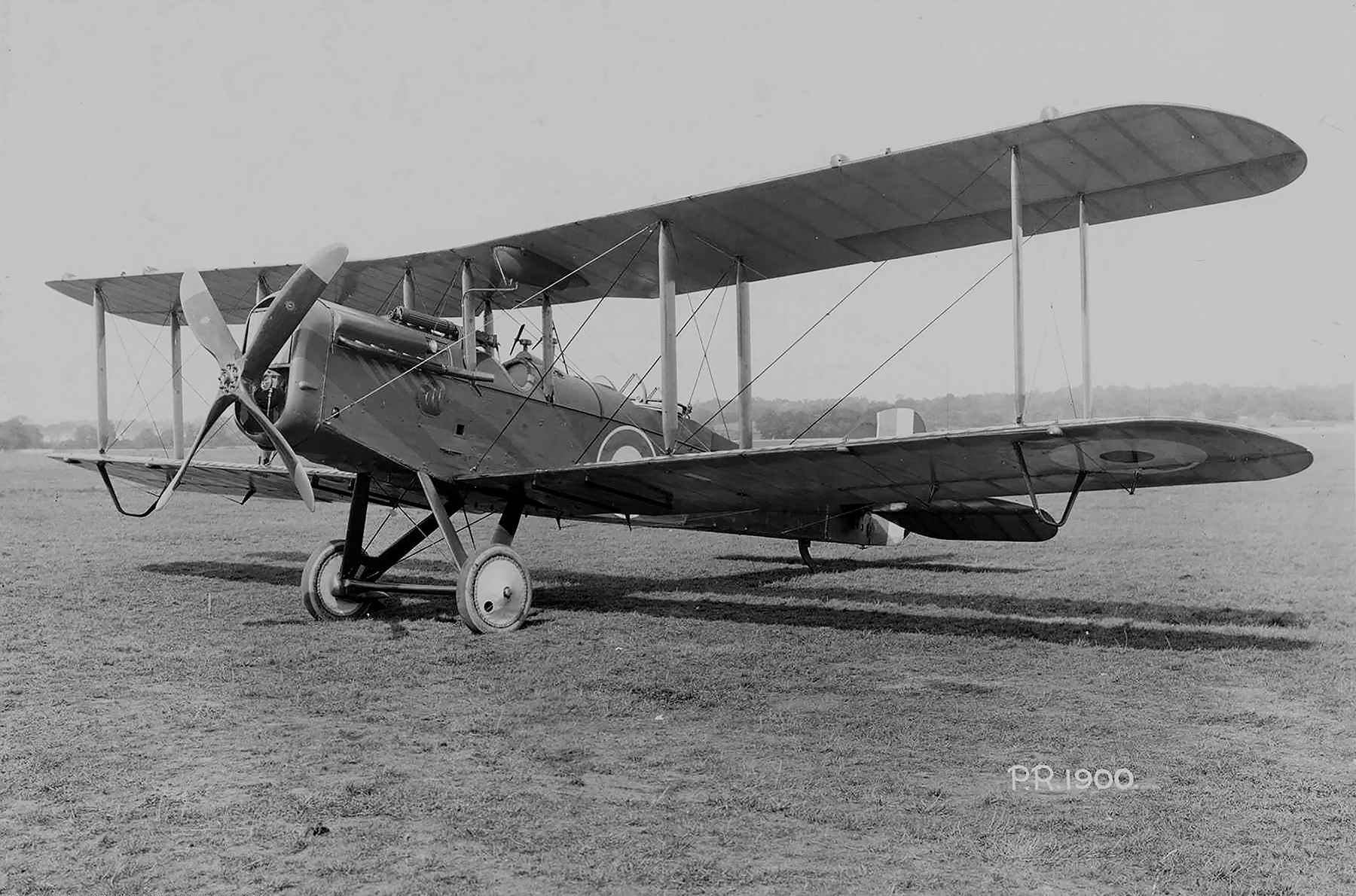Profile of Courage: Second Lieutenant Briggs Kilburn Adams
News Article / April 20, 2017
To see more images, click on the photograph under “Image Gallery”.
By Major Bill March
Soon after the Royal Flying Corps Canada (RFCC) started recruiting in January–February 1917, senior staff realized that obtaining sufficient numbers of personnel from Canadian sources was going to be a problem. After almost two-and-a-half years of war, Canada was “recruited out” because most of the available men had been gobbled up by the Canadian Expeditionary Force.
Therefore, albeit without official sanction, the RFCC began to actively recruit in the United States. Hundreds of young Americans flocked to Canada to join the Royal Flying Corps. The entry of the United States into the war on April 6, 1917, plus official government condemnation of the practice, slowed the flow of American recruits. Yet, for individuals who had run afoul of American military bureaucracy or who were too impatient to wait for the United States Air Service to “sort itself out”, the RFC was the way to go.
Briggs Kilburn Adams was one who could not wait, and he volunteered to join the British flying service.
Born in Montclair, New Jersey, on May 6, 1893, Adams was no stranger to war. He had volunteered as a driver with the American Ambulance Service and had seen the horrors of modern warfare first-hand in France throughout the summer of 1916. He returned home that fall more certain than ever that his country should join the fight. After completing his college education at Harvard University, he crossed the border and presented himself at the RFC recruiting office in Toronto, Ontario. In a letter home to his mother on August 10, 1917, he proudly informed her that, “I got up here Wednesday morning and was all day taking the physical examination and getting enrolled. I am now a British subject and will hold the commission when I get it until the end of the War.”
Dressed in a rough woolen uniform, but proudly sporting the “white flash” of a student aviator in his wedge cap, Adams spent the next several weeks at the School of Aeronautics on the University of Toronto campus. Hours spent learning how to march were interspersed with yet more hours learning the basics of flying, aircraft rigging, and how aero-engines worked.
In early September, he was transferred to Camp Rathbun, one of two aerodromes located near Deseronto, Ontario, for basic flight training on the Curtiss JN-4 (Canadian), the “Canuck”. As a member of No. 85 Canadian Training Squadron, Adams sought to reassure his family about his safety, noting that “smashes are of hourly occurrence on the aerodrome, but they all occur either in landing or getting off, so there is no fall, and the men get out without a scratch every time. Yesterday the fellow in the next bunk to mine went right over upside down and crawled out from underneath with nothing more than a bump on his nose!”
Having survived initial training at Rathbun, he was sent to Camp Borden, about 88 kilometres north of Toronto, in October for more advanced instruction – still on the ubiquitous “Canuck.” Flying in an open cockpit during a Canadian fall is not for the faint of constitution. After one rather cold day, Adams complained that “…When I came down, my machine was glazed with ice from the condensed vapor freezing. I never was so cold, in spite of two sweaters, coat and heavy lined leather overcoat… I would rather have been spanked than go up again after my second trip, but I had to go just the same.”
With more time in the air came a more aggressive training regime involving mock combat and gunnery practice. It was a rude reminder that, despite the sheer joy and novelty of flying, they were being groomed for war. Adams, like many of his contemporaries, wrestled on a personal level with the thought of going into combat. As he explained in a letter to his mother on October 24, 1917, “I feel no bitterness against the Huns [Germans] as individuals or as a race. It is war that I hate, and war that I am willing to give all to end as permanently as possible, for it isn’t the men that war kills, it is the mother’s heart which it destroys…”
The end of the month brought with it a bit of good news. In accordance with arrangements whereby the RFCC had agreed to train a number of personnel for the United States in return for winter flying facilities, Adams found himself in the middle of a wholesale move of the School of Aerial Gunnery from Borden to Texas. After several days on board a train, RFC personnel found themselves at Hicks Field near Fort Worth. Training would be every bit as rigorous, and dangerous, as it had been in Canada – but it was warmer.
Unaccustomed to foreign military personnel, the citizens of Fort Worth did not know what to make of the large influx of strangely dressed young men. Enjoying a spot of leave on November 4 “…created quite a stir,” Adams wrote, as “…soldiers were saluting us and people stared. I was talking with one soldier and he remarked in surprise, ‘I didn’t know Canadians could speak English!” Another asked where we were from, and when I said, ‘Canada,’ he asked, “What State is that in?’” The incongruity of having an American in a British uniform explaining about Canada to an American in an American uniform boggles the mind.
Adams’ time in Texas was short. Having completed his training by December, and having escaped a fate worse than death – being selected as an instructor – he found himself onboard a ship on the 22nd of the month heading for England. The first two months of 1918 were taken up with yet more training at aerodromes near Andover, Hampshire, and Turnbury, Scotland, but this time the training was on more advanced service machines in preparation for posting to a fighting squadron. Finally, at the end of February 2018, orders arrived sending Adams to No. 18 Squadron, in France.
Equipped with Airco De Havilland 4 aircraft, the squadron was conducting reconnaissance, photographic and bombing missions. Second Lieutenant Briggs Kilburn Adams arrived at the squadron field near Aire, France, on March 1, 1918, but due to less than cooperative weather he did not fly his first mission until the following week. Instead, he settled into his new quarters (a galvanized iron communal shed), got to know his squadron mates (“splendid chaps”) and acquainted himself with the mess (it had “a fairly passable piano”).
On March 14, he was dispatched to the airpark near Saint-Omer, France, to pick up a replacement aircraft. Returning to the squadron, for reasons unknown, the aircraft crashed soon after takeoff. Second Lieutenant Briggs died of his injuries in No. 10 Stationary Hospital. He was 25.
He was buried in Longuenesse Souvenir Cemetery in Saint-Omer, France.
If you are interested in learning more about Second Lieutenant Adams, many of his letters home were published in 1918 in a short book entitled The American Spirit: Letters of Briggs Kilburn Adams, Lieutenant of the Royal Flying Corps.


